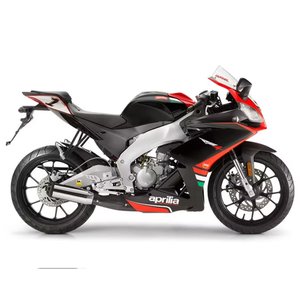Aprilia RS4 50 Replica (2011–2021): A Youthful Symphony of Sporty Aggression
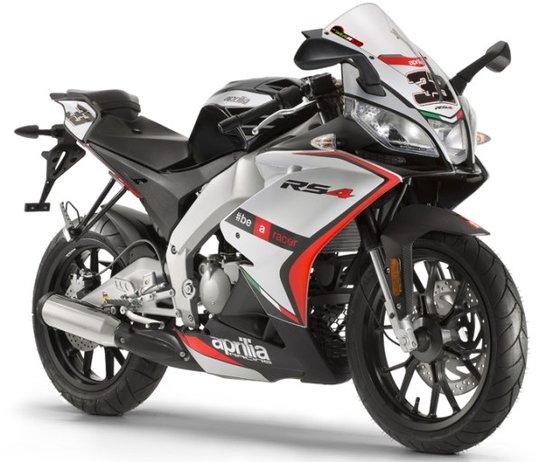
Introduction
For over a decade, the Aprilia RS4 50 Replica has been the gateway drug to motorcycling for a generation of riders. Designed as a 50cc homage to Aprilia’s World Superbike-dominating RSV4, this pocket-sized sportbike blends MotoGP-inspired aesthetics with accessible performance. Catering to riders aged 16+ in European markets, it’s more than a moped—it’s a full-blooded introduction to sport riding. With its liquid-cooled two-stroke engine, aluminum chassis, and track-ready ergonomics, the RS4 50 Replica doesn’t just mimic its bigger siblings—it channels their rebellious spirit into a 60 mph (96.6 km/h) package that feels twice its displacement.
Design & Styling: Small Bike, Big Presence
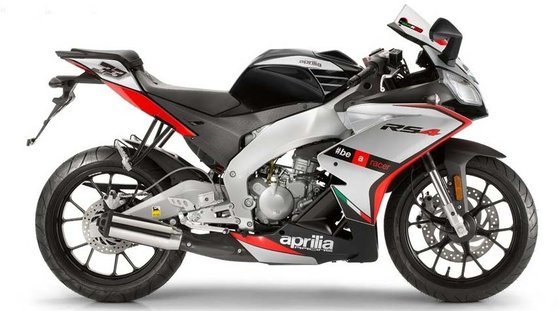
Aesthetics That Punch Above Their Weight Class
Slip into the RS4 50’s cockpit, and you’re immediately greeted by the same triple-LED headlight cluster that defined Aprilia’s RSV4 Factory superbike. The fairing isn’t just for show—wind tunnel-tested to balance protection and minimal drag, it’s a shrink-rayed replica of Marco Melandri’s 2014 WSBK machine. Over the years, color schemes ranged from Glam White (2011) to Marco Melandri’s #33 livery (2014–2015), with later models adopting racing stripes in Red/Silver/Black.
Ergonomics: Playful, Not Punishing
At 32.3" (820 mm), the seat height is accessible yet purposeful. The clip-on handlebars sit lower than most 125cc rivals, creating a committed (but not torturous) riding triangle. Unlike plasticky competitors, the RS4 50’s tail section hides a 0.87-gallon (3.3L) reserve fuel compartment and a storage space large enough for a U-lock—a nod to its urban commute duties.
Standout Details
- Exhaust Integration: The Euro 4-compliant (2021) expansion chamber tucks under the fairing like a GP bike, centralizing mass.
- Quick-Release Seat: Swap from solo to pillion configuration without tools—a godsend for impromptu coffee runs.
- LCD Dashboard: Borrowed from Aprilia’s RSV4, it’s a 16-year-old’s first taste of superbike tech.
Engine & Performance: The Two-Stroke Thrill, Refined
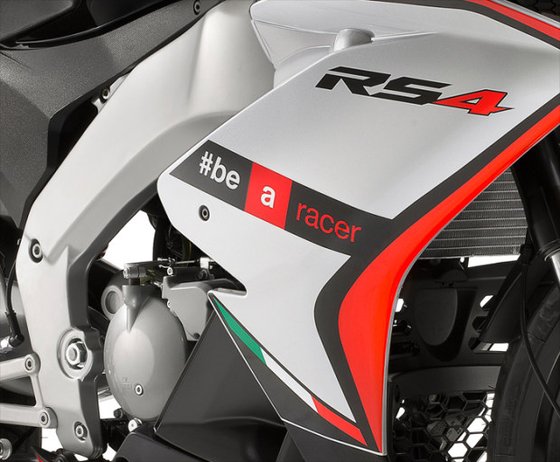
Spec Sheet Soul
- 49.9cc Liquid-Cooled Single: Reed-valve two-stroke with Dell’Orto PHVA 14–17.5mm carburetors (varies by year)
- 11.5:1 Compression Ratio: Requires 95 RON fuel—no corner-cutting here
- 6-Speed Gearbox: Uncommon in 50cc class, allowing 8,500 RPM sprints between lights
- Fuel Efficiency: 94.85 MPG (2.48 L/100km) in Euro 4 models—practicality meets hooliganism
Riding the Powerband
Twist the throttle, and the RS4 50’s two-stroke character shines. Below 6,000 RPM, it’s docile—a compliant commuter. Cross 7,000 RPM, and the exhaust note tightens into a metallic shriek as the power valve opens. The 6-speed box (a segment rarity) lets you chase that sweet spot between 8,000–10,500 RPM, where the tiny piston delivers its 6.7 HP (5 kW) peak. It’s not fast by liter-bike standards, but the 291 lb (132 kg) wet weight makes every horsepower count.
Maintenance Quirks
- Autolube System: No premixing—the separate oil tank (1.1L capacity) needs monthly checks
- Spark Plug Life: NGK BR9ES lasts ~1,500 miles (2,414 km) with aggressive riding
- Carb Tuning: Dell’Orto jets respond well to aftermarket air filters—a popular MOTOPARTS.store upgrade
Handling & Ride Experience: MotoGP Pretensions
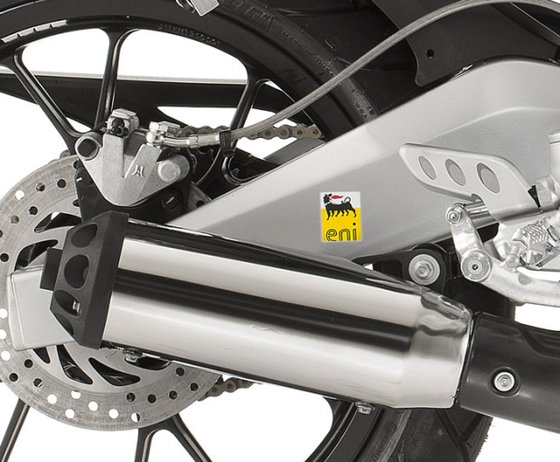
Chassis Dynamics
The twin-spar aluminum frame (stiffness borrowed from Aprilia’s 250GP bikes) pairs with a 41mm inverted fork and asymmetric swingarm. At 53.1" (1,350 mm), the wheelbase strikes a balance between flickable urban agility and highway stability.
Suspension Specs
- Front: 110mm (4.3") travel—sufficient for potholed streets
- Rear: 130mm (5.1") wheel travel with preload-adjustable monoshock
Braking Performance
Radial-mount 4-piston calipers (2014+) bite a 300mm front disc—overkill for 50cc, but confidence-inspiring during late-brake heroics. The rear 218mm disc lacks ABS (a segment-wide omission), encouraging proper technique.
Tire Talk
- Front: 100/80-17 (2011–2013: 110/80-17)
- Rear: 130/70-17
The switch to narrower front rubber in 2014 quickened turn-in—a godsend for alleyway U-turns.
Competition: How the RS4 50 Stacks Up
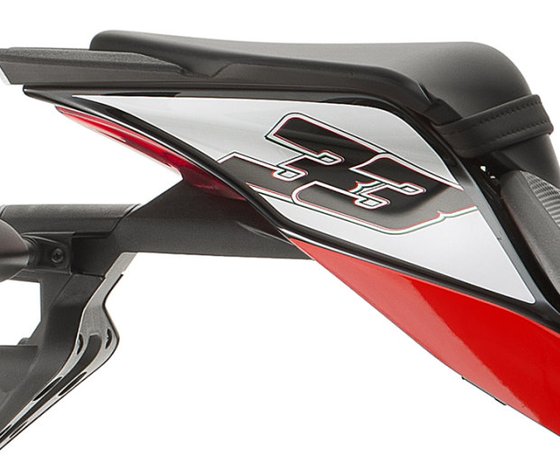
Yamaha YZF-R125
- Pros: 4-stroke reliability, 15 HP
- Cons: 30 lbs (13.6 kg) heavier, less aggressive ergonomics
- RS4 Edge: 17% cheaper maintenance costs, race-replica aesthetics
KTM RC 125
- Pros: WP suspension, ride-by-wire throttle
- Cons: Steel frame adds weight, higher seat (33.1")
- RS4 Edge: Two-stroke character, 6-speed gearbox
Honda CBR125R
- Pros: Fuel injection, 67 MPG
- Cons: Dated design, upright riding position
- RS4 Edge: Aluminum chassis, genuine WSBK styling cues
Maintenance: Keeping the RS4 50 Razor-Sharp
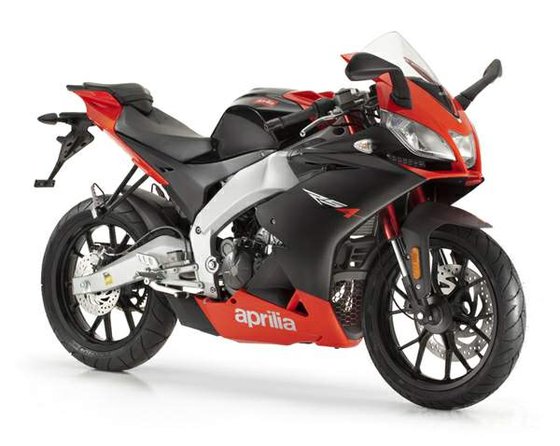
Critical Service Intervals
- Every 600 mi (965 km): Clean carburetor jets, check reed valve petals
- Every 1,200 mi (1,931 km): Replace gearbox oil (10W40), inspect powervalve mechanism
- Every 2,500 mi (4,023 km): Decarbonize exhaust, repack silencer
Common MOTOPARTS.store Upgrades
1. High-Flow Air Filters: Unlocks richer midrange without rejetting
2. Adjustable Levers: Better fit for smaller hands
3. Sport Touring Tires: Bridgestone Battlax BT-45 improves wet grip
4. Steel-Braided Lines: Firmer brake feel for $89.99
Troubleshooting Tips
- High-RPM Bogging: Likely clogged main jet—keep a #85–#100 jet kit on hand
- Cold Start Issues: Check autolube pump priming—30-second idle warms the cylinders
- Chain Slap: 14/53 sprockets stretch quickly—upgrade to DID 428H chain
Conclusion: The RS4 50’s Lasting Legacy
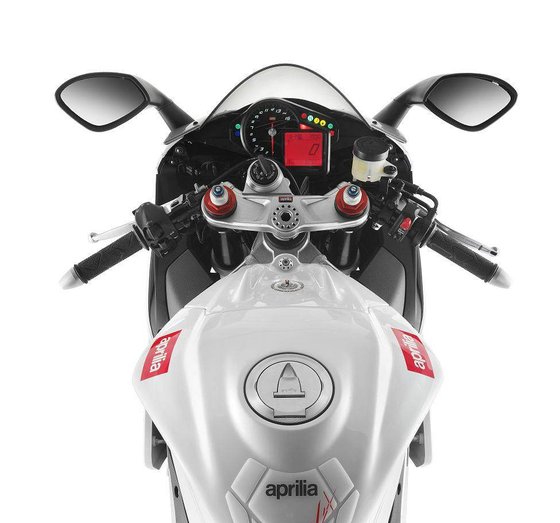
The Aprilia RS4 50 Replica isn’t just a motorcycle—it’s a motorcycle enthusiast’s starter kit. For every oil-stained teenager learning jet sizes, there’s a future track day addict discovering knee-down geometry. While Euro 5 regulations have sunsetted two-strokes, the 2011–2021 models remain coveted for their mechanical purity.
At MOTOPARTS.store, we keep the RS4 50 spirit alive with OEM-spec pistons, race replica fairings, and period-correct decal kits. Because every legend deserves immortality—one spirited ride at a time.
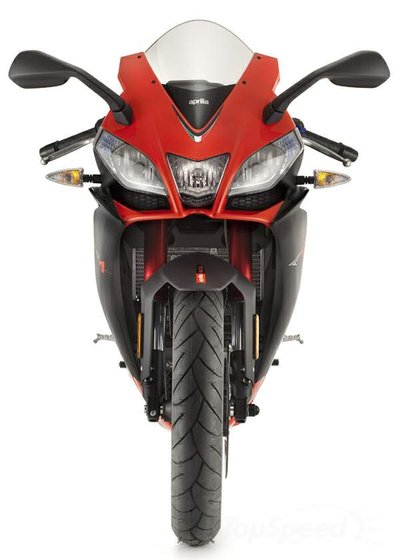



Specifications sheet
| Engine | |
|---|---|
| Stroke: | Two-stroke |
| Fuel system: | Carburettor (Dell’Orto PHVA 14 mm) |
| Displacement: | 50 ccm |
| Configuration: | Single |
| Cooling system: | Liquid |
| Emission details: | Euro 2 (2011–2019), Euro 4 (2020–2021) |
| Compression ratio: | 11.5:1 |
| Lubrication system: | Automatic mixer |
| Number of cylinders: | 1 |
| Dimensions | |
|---|---|
| Wheelbase: | 1310–1350 mm (51.6–53.1 in) |
| Wet weight: | 132 |
| Seat height: | 820 mm (32.3 in) |
| Overall width: | 720–740 mm (28.3–29.1 in) |
| Overall height: | 1138–1390 mm (44.8–54.7 in) |
| Overall length: | 1953–1965 mm (76.9–77.4 in) |
| Fuel tank capacity: | 14.5 L (3.8 US gal) |
| Reserve fuel capacity: | 3.3–3.5 L (0.87–0.92 US gal) |
| Drivetrain | |
|---|---|
| Final drive: | chain |
| Transmission: | 6-speed |
| Rear sprocket: | 53 |
| Front sprocket: | 14 |
| Primary drive ratio: | 21/78 |
| Electrical | |
|---|---|
| Battery: | 12V 4Ah (6Ah on some models) |
| Instruments: | LCD screen or analogue/digital multifunction dashboard |
| Maintenance | |
|---|---|
| Rear tire: | 130/70-17 |
| Engine oil: | 2-stroke oil (premix with automatic mixer) |
| Front tire: | 100/80-17 (2017–2021) o- 110/80-17 (2011–2016) |
| Brake fluid: | DOT 4 |
| Spark plugs: | NGK CR8E or NGK CR8EIX |
| Wheel rim sizes: | Front: 2.75 x 17 in, Rear: 3.50 x 17 in |
| Additional Features | |
|---|---|
| Exhaust: | Integrated racing-style stainless steel system |
| Storage: | Under-seat compartment |
| Color options: | Glam White, Black, Red, Silver Speed, Racing variants (year-dependent) |
| Chassis and Suspension | |
|---|---|
| Frame: | Aluminum twin-spar or perimeter frame (model year dependent) |
| Rear brakes: | 218–220 mm disc, single-piston caliper |
| Front brakes: | 300 mm disc, radial 4-piston caliper |
| Rear suspension: | Asymmetric swingarm with monoshock |
| Front suspension: | 41 mm upside-down fork (40 mm on earlier models) |
| Rear wheel travel: | 110–130 mm (4.3–5.1 in) |
| Front wheel travel: | 110–120 mm (4.3–4.7 in) |



